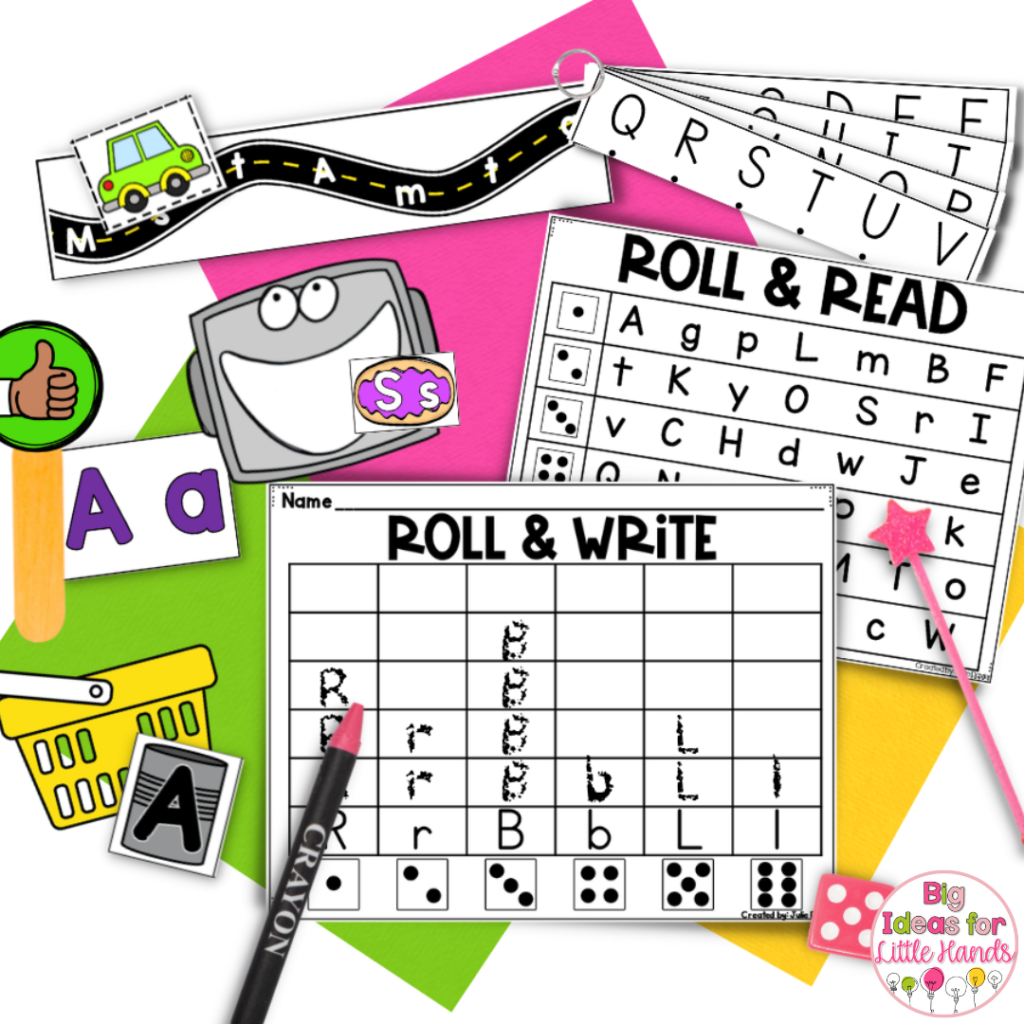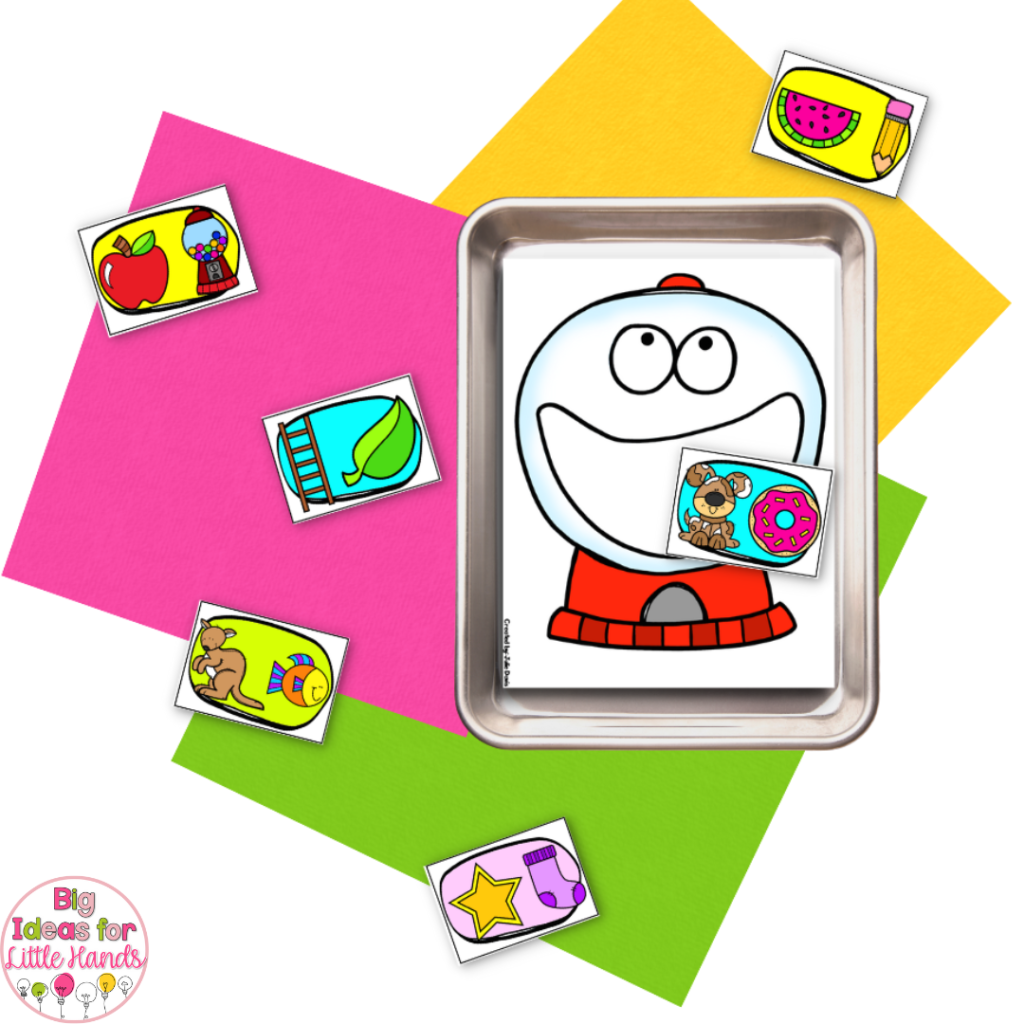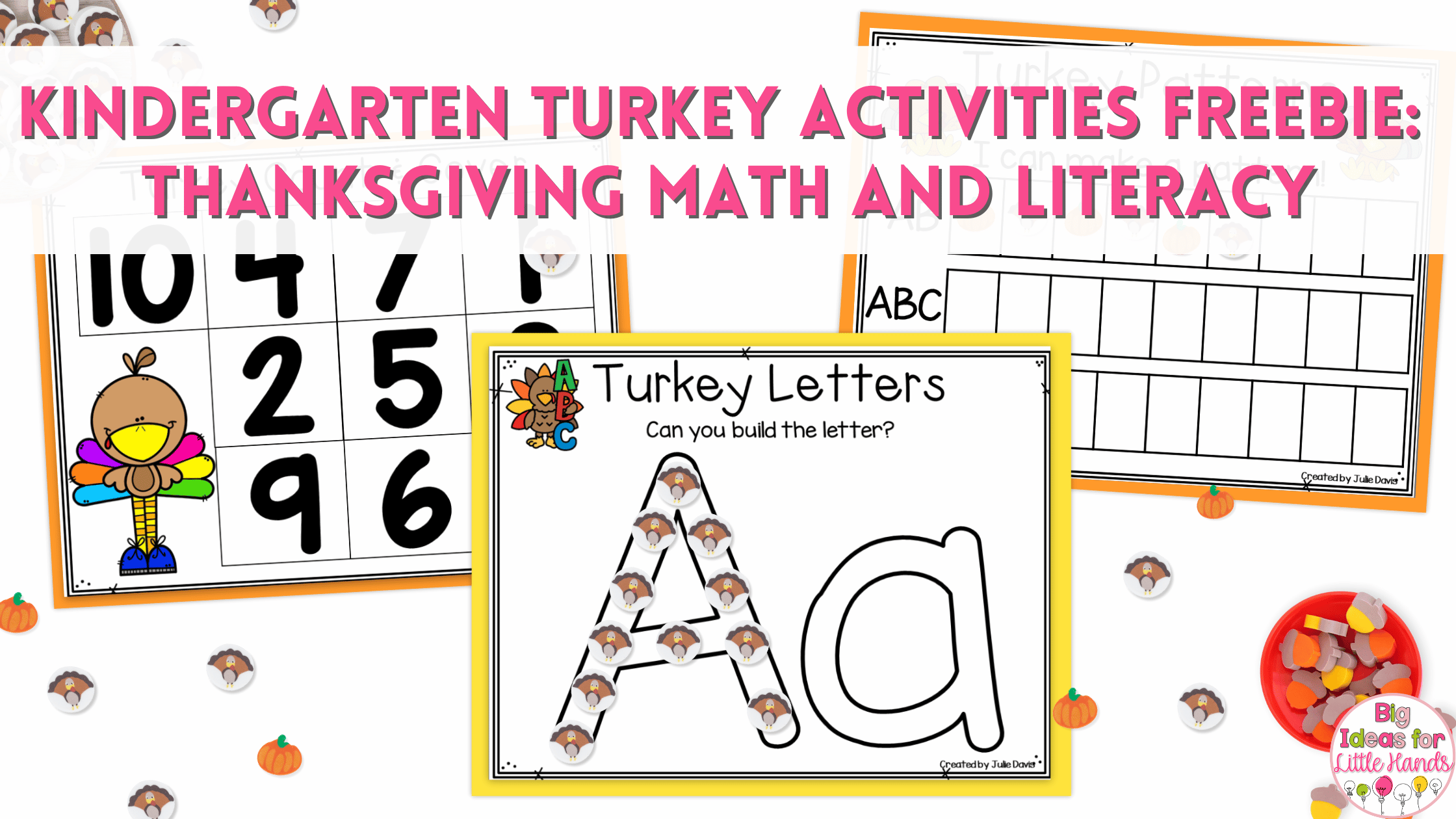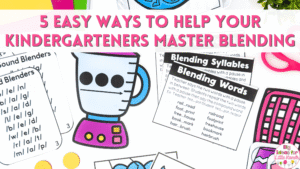If you’re a classroom teacher to littles, you likely already know that one-on-one time with students is pretty limited. As a kindergarten teacher, I have approximately 20-25 kiddos in my room each year and it can be really tricky to make sure everyone gets what they need. If you’re feeling this struggle, let’s talk about how small groups will be a total game-changer in your teaching!

What Are Small Groups?
Small groups are exactly what they sound like! It is a dedicated time when you pull your students, in smaller groups, to provide direct instruction. To get started, you’ll split your students into groups. I have found that 4 – 6 kiddos per group is a great size. This number seems to be just right for individualized attention! I like to group my students by skill level or the concept we will be covering.

My goal is to work with each group, every single day. At the bare minimum, I recommend having small groupings for guided reading and other literacy activities, but I also like to group my students for math lessons too! If you use both math and literacy small groups, your students in each will most likely be different, as students should be sorted by skill level for each subject.
The benefit of grouping by skill level is that students will have the opportunity to work on a “level playing field” so to speak. There’s nothing more heartbreaking than watching one student struggle while his peers are zipping through the assignment. Help reduce this from happening by putting children in groups with other kids of similar abilities.
Grouping by skill level also means differentiation will be a breeze too. You can easily assign appropriate activities to each group to help meet their needs and challenge them.
Before You Start with Small Groups
Before you get started with small groups, let’s talk about strategies for success. The primary goal of small groups is to allow you, the teacher, to have dedicated one-on-one instruction opportunities with students. This is essential for implementing intervention strategies and conducting assessments. But, in order for this to work, the rest of your students need to be occupied in other learning activities at the same time.

While this might sound obvious, if you don’t consider how your students work independently, you’re setting yourself up for a super chaotic small group time. Children who don’t know how to work and play independently will constantly be interrupting the small group, or worse, arguing with each other!
Prepare for this before your first small group interaction. My best advice for this is to spend the first few weeks of school nailing down routines and expectations. If you’re reading this at a later time, it’s never too late! Just plan to spend a few weeks working on learning the schedule, how to use classroom materials, and how to rotate during small group/center time.
Once your students understand this, you’ll be in a much better place to conduct a successful small-group experience. Oh and don’t forget to set your other students up with easy-to-understand activities while you’re working in small groups. I’m a huge fan of snap cube centers since they follow a familiar, kid-friendly format and they’re highly engaging!
Choosing Your Small Group Materials
Next, consider what you’re looking to target. In my classroom, we spend a lot of time working on phonics skills. For example, letter identification gets a ton of attention throughout the year since this is such an important piece of phonemic awareness. If you’re focusing on learning letters, you’ll want to consider the skill level of each group based on a recent assessment. For example:
- Has everyone mastered uppercase letters?
- Has everyone mastered lowercase letters?
- Is a particular group ready for mixed practice?
Questions like these will help ensure you’re assigning the right types of activities to each group. The goal in small groups is as much personalized instruction as possible. We don’t want the material to be super easy, but we also don’t want to jump the gun and make it too difficult either! Take some time to consider where each of your groups is at and choose activities accordingly.
Aside from the actual skills you’re looking to target, you’ll also want to think about what types of activities you want to include. My main goal when choosing activities is to make them as engaging as possible, which in my experience usually means small group games! They’re also a great opportunity to lean into fun forms of hands-on learning. This is also when we use play dough and other tactile materials to facilitate learning. Since I’m there to supervise, nothing is off-limits here!
Set Up and Storage for Small Groups
Now, on to the practical stuff, how the heck to set up and store small group materials?! In my room, I’ve come up with a system that seems to work fairly well.

Before I do anything, I like to print, laminate, and cut all possible small group activities for the month.
I store these in zipper bags within a hanging file folder box for the whole month.
I like this because at the end of the month I put the lid on and store it away easily for next year. If you’re using materials you already prepped last year, you can skip this step!
Next, you’ll want to get yourself a drawer cart like this one. I know it’s a bit of an investment, but it’s honestly one of my favorite classroom purchases of all time. Keep an eye on places like Costco and Michaels. They often have a similar unit that frequently goes on sale!
Anyway, I like this particular unit because it has small drawers for each group’s paper materials and larger drawers on the other side for manipulatives and other tools. I label each small drawer with a number to represent each group. This makes it simple to store everything I need for each group as well as any materials we will be using.
Planning Small Group Activities
Last, I sit down with my lesson plan book, my small group games, and worksheets and start planning!

I like to use a variety of hands-on learning games in small groups since these provide the highest level of engagement with my students. I assign specific games to each day and skill level group to help align with what we’re focusing on.
I also like to include a worksheet or follow-up activity in my drawer cart for each group. This way, when the small group session is over, I can hand my students their next activity to complete when we rotate.
This is a great way to avoid the comparison game that occurs among students when they are given the chance to compare activities.
Planning Small Group Activities for Warm-Up
Another thing I like to keep in mind when planning my small group activities is what my students will focus on when they first sit down at the table. If you’re like me, you need a couple minutes to oversee the rotation process and make sure everyone is where they are supposed to be and working. In order to do this, I provide my small group with a warm-up activity. Keeping a simple “warm-up” activity in mind is very important when considering what activities to choose.

As we are switching during small groups and center time, I love to use “Cover it Up” games for this very purpose! We use them to target beginning sounds, letter recognition, CVC words, and more.
As kiddos arrive at the table, I have worksheets placed in every spot so they can start right away. Using them is simple! Kiddos will take a look at the skill being targeted at the top of the page and either use manipulatives to cover up matching pictures or color them in.
I love that these pages use a familiar format that my students recognize and they can jump right into learning while I take a few minutes to get organized for my new group. Since every group is working at a different pace, these few minutes really help “fill the gap” for me while I gather what I need. Not to mention, it’s also nice to squeeze in a little extra practice with a variety of phonics skills before we start our group activity too!
Make Learning Fun In Small Groups
Now onto the final stage, actually teaching in your small groups! This is the fun part where all of your hard work will pay off! Once you get the opportunity to work with your littles in small groups, I recommend making the most of that time!
Games are always a winner when it comes to maximizing time in small groups. Students love to play games which helps them look forward to small group time, plus you can target SO many different skills! For example, when focusing on phonemic awareness, we usually work on activities from each of these resources during small groups:
We use games like Swat, BINGO, Feed Me, Roll and Write, and more to practice these phonemic awareness skills every day in small groups. I love that these games target important skills that we’re working on, while also using enough variety to keep things interesting for my students too!
I like to choose a couple of games for each week, and then revisit them later to assess mastery. Using games for assessment takes the pressure off too! Students likely won’t even notice that you’re checking to see what they’ve learned and what they need to focus on next. This is always my goal in the classroom, the more fun we can make learning, the more accomplished I feel in my teaching!
An extra bonus is that I am able to teach students how to play all of these games. Once we have used them in small groups I like to move them into the center rotation. Since students learned to play, there are very few questions or “arguments” about the rules.
Using Small Group Games All Year Long
I know that once you get started with small group games in your room, you’ll be absolutely hooked just like me! It’s my favorite part of every day since it offers the opportunity to see how my students are progressing while also forming relationships and being a little silly with them too!
We use games all year long to target phonemic awareness skills. Since this is something we work on daily, using games is a great way to ensure it’s lots of fun for my students too! If you want to give this a whirl in your room, enter your information below to be sent a FREE rhyming game! Your students will love this game and it will give you a little insight into what to expect in each of the small group game resources.
And if you’re ready to start using them all right away, be sure to check out the small group games growing bundle. This bundle already includes 5 great resources and will have a total of 9 when complete. Purchasing now means you’ll get all future additions for FREE! This bundle will make planning your small group reading activities simple and easy all year long! Here’s a peek into this amazing bundle:
Looking for More?
If you’re looking for ideas and games to use in your math small groups, check out these posts!
- Back to School Counting Games for Kindergarten
- Fall Shape Activities & Games
- The Importance of Subitizing
Save these Tips for Managing Small Groups
Pin this post on Pinterest to keep these ideas handy when you’re ready to plan small groups!










